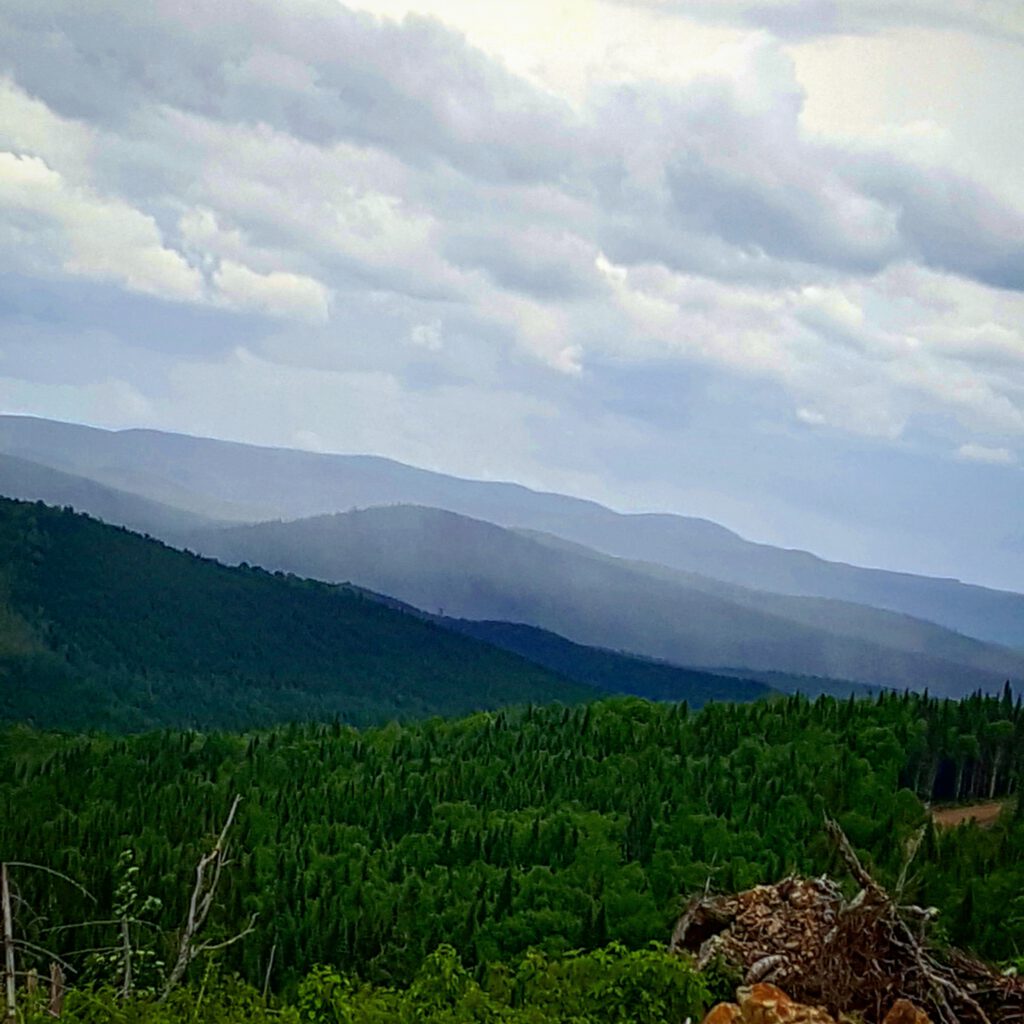A Picture is not Worth a Thousand Words

Images are powerful propaganda tools especially when the story that accompanies those images is used to tell a damning story of forestry practices in New Brunswick. But with the use of any imaging technology, whether its drone footage or satellite imagery, the information it generates is only as good as the interpretation of it.
A case in point of this problem is recent footage compiled as a documentary entitled, “The New Brunswick Forestry Apocalypse”. Now this YouTube clip is actually a simulated flight view of a stretch of forest pieced together using satellite imagery. Its actually pretty representative of what you would expect to see if you flew over this stretch of forest in real life. What is missing is knowledgeable interpretation of the scene below and a misleading picture of New Brunswick forests at the landscape level. There is no doubt that there are stretches of conifer dominated forest stands managed for even age composition which are to be found in different stages of development, some recently clear cut, some young, others mature. Its also what a naturally regenerated forest would look like in response to a natural disturbance like budworm outbreak or a forest fire event. In fact, it is naturally occurring forest regrowth that dominates 85% our forested landscape. Unfortunately, the producer of this video has wrongly extrapolated his interpretation of this forest stand to all of New Brunswick, peppering his narrative with alarmist and inflammatory language like “devastating” and my favorite “biblical level destruction”.
But I wouldn’t build an ark just yet. The problem is not with the documenting of forestry operations. Forestry professionals and the companies that employ them are all for showing off what they do in forest management. Forestry companies regularly invite critics to view their operations with a view of explaining what is popularly misunderstood as deforestation. Sometimes, to their credit, critics show up, most times not. Clear cutting, as a popular example, is in fact one type of harvesting practice used to regenerate even aged conifer stands. It is a prevalent harvesting method owing to the abundance of mature softwood forests in New Brunswick. Of course there are set asides; 23%, soon to be 28%, of the three million hectares of crown forest area will be in conservation because an appropriate amount of old growth forest, watercourse buffers and other conservation needs are an important part of forest management. Is it an oversight or calculated strategy that these budding documentarians do not report on the 30% hardwood forests that cover our province or the 20% mixed wood forests and the management techniques used to sustain this diverse mixture of forest composition. This is the all-important context that is absent from the ten-minute YouTube variety clip, carefully curated to select one type of forest stand managed for one type of outcome. There are many more outcomes that critics do not want you to see and definitely they do not want to acknowledge for fear of losing their audience.
The story of a clear cut or any harvest type does not stop at the cut, there are important chapters that follow in the story of forest management. We simply ask of those recording the story let the camera roll a little longer than ten minutes because sometimes a picture is not worth a thousand words.
Mike Legere, Executive Director of Forest NB
